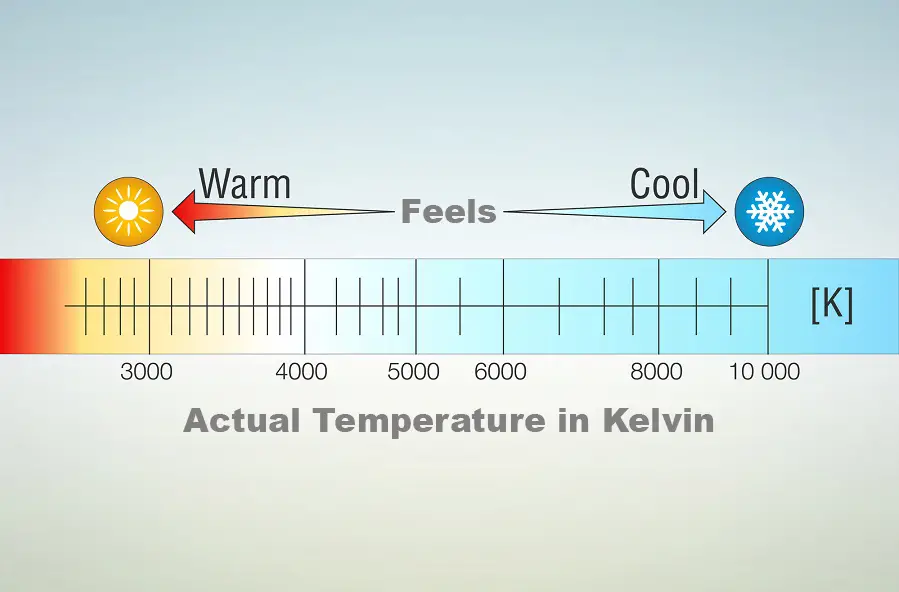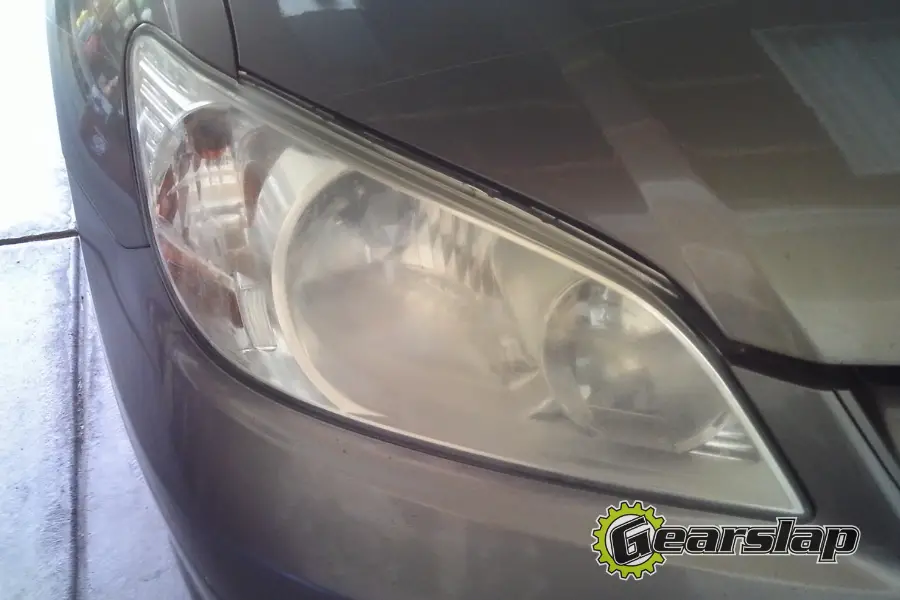Several years ago I ran a headlight restoration service business. The whole business was something I tripped into and wound up using it in multiple projects for school.
As part of my marketing plan I had the before and after photos from several headlight jobs I’d done. I put the photos in a tri-fold brochure. They were very effective at selling more services.
The other things I had in the brochure were testimonials and the data from multiple tests I’d conducted on the effects of a headlight restoration on the brightness of headlights. The actual light output can be measured.
The best “proof” I had that my services worked were the before and after light tests. It’s amazing how much light gets trapped by the dull & yellow polycarbonate lenses when they’re bad.
These tests proved that.
But, how did I conduct the “experiments” for my marketing materials? How did I measure the brightness of the headlights I serviced and is it something that anyone can do – especially if you feel like your lights aren’t bright enough at night?

How is Light Measured from Your Headlights
You can measure the brightness of your headlights using a light meter to measure the lux and lumens of your headlights. Your state will have laws in their vehicle code for the minimum and maximum brightness for headlights. You’ll want to make sure you’re within those limits.
Sometimes states have laws that don’t mention “brightness” as a measurement but rather a distance. For example, some states’ laws say that your lights must illuminate up to 115 feet from your car. As long as your light reaches that distance, you’re within the law.
But distance doesn’t necessarily equate to being “safe enough” in all cases. You’ll want to make sure the light illuminates that whole distance, and further, in many cases.
Most importantly you’ll want to ensure that you have the most light possible so you can drive safely at night.
Are you sure that your headlights are bright enough for nighttime driving? Knowing how to measure the brightness of your headlights is an important part of vehicle safety. Here is everything you need to know about properly measuring your headlight’s brightness levels.
Why Would You Want to Test the Brightness of Your Lights?
There are several reasons why you will want to test your headlights for brightness. First, you want to make sure that your vehicle has the proper amount of viability for nighttime driving.
It’s a safety issue. If you’ve found yourself with the feeling that you can’t see well enough at night then there’s a risk of accident or hitting something (or someone) because you can’t see them.
From a legal standpoint, you want to be compliant with your state’s laws. Since all states have regulations about the minimal amount of light that must be emitted from your vehicle’s headlights (and a maximum amount) – you need to test to make sure you’re in compliance with the vehicle code.
It’s also a good time to check if one or both of your headlight bulbs need to be replaced. If you’re measuring the brightness anyway, you can verify that your lights are working first. The dimness you experience may just be a burned-out light.
Finally, it is a good idea to measure your headlights to see if your vehicle’s battery is giving off a proper charge. Older batteries tend to reduce the amount of light illumination.
What’s the Difference Between Lux and Lumen?
When you start to research headlight brightness, you will hear terms such as lux and lumen. Lux refers to a unit of measurement for illuminance over a given area (measured in square meters). Lumen, on the other hand, refers to the total quality of visible light from a source.
In short, lux is about the amount of visible light present while lumens measure the intensity of illumination from a light source. It’s still somewhat confusing, I know, so let’s define them both a little better:
Lux: Is the amount of light projected onto an area. It’s usually measured in meters squared (m2) and the amount of light that is cast onto a surface is called illuminance. One lux equals one lumen in a square meter area. You can measure lux with a light meter but you have to know the size of the area being measured and the distance from the light source. The formula looks like this: (Lumens/Area in m2) = Lux
Lumen: Measures the intensity of light being emitted. You could refer to Lumens as “Brightness” of light coming from a source. A lumen measures the light intensity or total brightness of the light in general – but you’d need to know if the brightness is sufficient for the area it’s in, and that’s where lux is used.
For example, you could have a light that emits 1000 lumens. That light would be really bright in a 100 sq. ft. room (100 ft2 = 9.2903 m2 = 107.64 lux) but wouldn’t be bright enough to light a football field, that’s 5,351 m2 (.19 lux)
You may be interested to know that a lumen originally measured the amount of light from a single candle. Thus, one lux is quite literally the amount of light a single candle would illuminate a square meter. (if you want to geek out, you can read more about measuring light here)
Both measurements are going to be important when determining the brightness of your headlights. But while we’re still talking about candles…
What about Foot-Candles or Kilo-Candelas?
There are two additional measurements for light “brightness” that we need to address. For us “imperialists”, we have a measurement similar to Lux called Foot-Candles (FC).
You can probably guess that a Foot-Candle measures the amount of light in an area using square feet instead of square meters. An FC equals one lumen per square foot, at a distance of one foot from the light source – the formula looks like this: FC=lm/ft2. It relates to Lux by about a power of 10. So one FC = ~10 Lux (10.57 Lux to be precise).
A kilo-candela (kcd) is equal to 1,000 candelas. A Candela (cd) is the measurement of light in a specific direction. Obviously, a candle burning will emit light in all directions. So we needed another term to describe the brightness of light when it is directed.
With all directed light, such as headlights, flashlights, and headlamps, we want to get an idea of how intense that light is – as it’s directed where we want to see. That’s where a candela comes in.
One candela is essentially equivalent to one foot-candle. But, with a candela, you have to assume that the light is “directed” in some way – meaning that it’s not omnidirectional light.
Some light meters, especially those specific to measuring headlights, will take measurements in kcd. Like this one made by Detail King.

What Does Temperature Mean for Headlights?
Another term you will hear about when it comes to measuring headlight brightness is temperature or color temperature. As a light heats up, it will change its color. The higher the color temperature, the bluer the light will appear. On the low end of the color temperature spectrum, the light will appear more yellow.
It’s a bit of an inverse relationship because most people relate bluer light with “cold” feelings and warmer, more yellow light, as feeling “hot”. However, the temperature of the light, as measured, will be higher for the whiter/bluer lights and cooler for the more yellow light.
When measuring the color temperature of a light, you will use a unit known as degrees Kelvin (K). The best color temperature for night driving is going to fall between 4,300K to 6,000K. This is the range where a bulb will emit a bright white light.
Just remember, how the light “feels” doesn’t correlate to the actual temperature of the light.
How to Use a Light Meter to Test the Brightness of Headlights
When measuring a headlight for brightness, you will be using an instrument known as a light meter. A light meter is a handheld digital meter that is used to measure the amount of light falling on a subject or incident light.
A light meter can also measure the amount of light reflected by a subject or reflective light. This is why they’re frequently used in photography to test for the optimal, or desired, lighting.
When using a light meter, you will simply hold the device close to the subject you want to measure. In the case of measuring headlight brightness, you can pull your car around 10 feet (6.5 meters) from a wall and, while projecting your headlights against the wall, you hold the light meter close to a wall to take the measurement.
You can also test the light emitted from the headlights at a specific distance from the front of the vehicle.
How to Test Headlights for Brightness
The best way to test headlight brightness is to wait for nighttime when there is no ambient light. I personally like to drive to the desert or plains where I have a nice flat, dark, view of my headlights.
Turn on your vehicle’s headlights and stand about twenty feet away from the vehicle.
From there, use a light meter to measure the amount of light emitted from each headlight. You will want to stand in front of each headlight and take a separate reading. Be sure to stand at the center of the beam of each headlight.
Also, make certain that you are standing at the exact same distance when measuring each headlight.
You’ll also want to take a measurement about 120 feet from your vehicle to test that your headlights are both powerful enough to reach that distance, but also intense enough at that point.
Ideal Brightness and Temperature for Headlights?
When it comes to vehicles, the ideal amount of brightness for headlights is going to be between 2,800 to 3,200 lumens and 4,300K to 6,000K. This is the level where your headlights will emit a clear white light that is powerful enough to illuminate the night when you drive.
Whiter light is going to give your headlights the ideal amount of brightness, which is within the 4,300K to 6,000K range. The color range of light is usually referred to as “temperature” and is measured in Kelvin (Kelvin is a measurement of temperature, just like Fahrenheit or Celsius).
What is the relationship between Lumens and Kelvin?
Lumen and Kelvin have a similar relationship. The higher the color temperature, the higher the lumen reading (in most cases). A really white light (8,000K+) will have a high Kelvin temperature and will most often be an intense light with a high lumen reading.
For instance, a low color temperature will have a low lumen reading and emit a more yellow light. A high color temperature will have a high lumen temperature and emit a light temperature that is bluer on the light spectrum.
What are the Various Types of White Light Emitted from a Headlight?
Since a 4,300K to 6,000K color temperature is the ideal amount of brightness for your headlights, you should be familiar with the types of white light available in that spectrum.
At 4,300K, headlights will emit a yellow-white light which is going to be a mix of 80% white and 20% yellow.
At 5,000K, headlights will emit a bright white light that is 100% white. At 6,000K, headlights will emit an Alpine White light that is 90% white and 10% blue light combination. All these white lights are suitable for nighttime driving.
What are the Best Headlight Bulbs for Brightness?
The type of bulbs that you have in your vehicle’s headlights is going to play an important role in overall brightness. Most automotive experts recommend that you use either an HID or a LED light bulb. Halogen and Xenon light bulbs tend to have a lower amount of brightness compared to HID or LED bulbs.
My goal when writing most articles on this site is to give you enough information to answer the question – and then I add around 100% more information than that. This way you have answers to questions you didn’t even know you had yet.
We want to make your car better, faster and louder. We want to make you smarter in the process.
You might say, we’re here to illuminate your mind!



